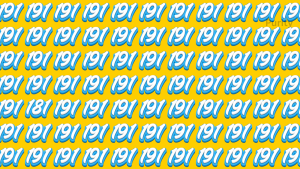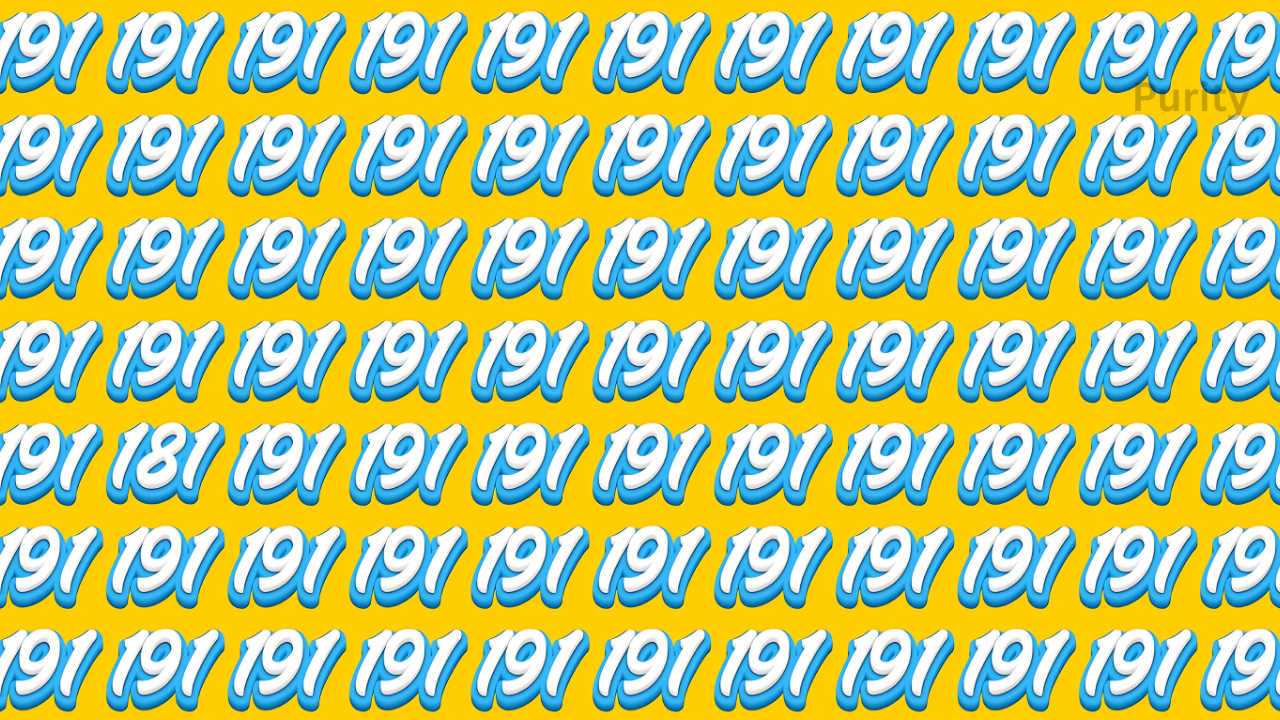Have you ever wondered if you possess extraordinary visual perception? Those rare eagle eyes that catch details others miss? Well, here’s your chance to put those peepers to the test.
Optical illusions have fascinated humanity since ancient times. From cave paintings to modern digital trickery, we’ve always been captivated by images that deceive our brains.
Today’s challenge separates the average viewers from the visual virtuosos. Only people with exceptional vision can spot the number 181 hidden within this particular illusion within just 7 seconds.
What Makes This Challenge Special?
Most people struggle with this specific illusion because of how our brains process visual information. Our minds often see what they expect to see, not necessarily what’s actually there.
The number 181 hides cunningly among similar shapes and patterns. Your brain must overcome its natural tendency to group similar objects together and instead focus on finding the subtle differences.
Scientists call this phenomenon “pattern recognition override.” It’s the rare ability to see beyond what your brain automatically processes and detect anomalies within seemingly uniform patterns.
Those who quickly spot the hidden 181 typically possess superior visual processing abilities. These same skills once helped our ancestors spot predators hiding in tall grass or identify poisonous berries among safe ones.
The Science Behind Optical Illusions
Optical illusions aren’t just entertaining puzzles. They reveal fascinating insights about how our brains interpret the world around us.
Your eyes don’t actually “see” anything. They merely collect light that your brain transforms into meaningful images. This complex process leaves room for misinterpretation and trickery.

When viewing an optical illusion, your visual cortex works overtime. It attempts to make sense of conflicting information, often resulting in perception that doesn’t match reality.
The number 181 challenge specifically targets your brain’s number recognition pathways. These neural networks must work against distraction and camouflage to identify the hidden digits.
Why Only Some People Have “Eagle Eyes”
Not everyone processes visual information equally. Some individuals naturally possess more efficient visual processing systems than others.
These differences stem from a combination of genetics, early childhood development, and even how frequently you challenge your visual system throughout life.
People with “eagle eyes” often have more densely packed photoreceptors in their retinas. They might also have more efficient neural connections between their eyes and visual cortex.
Professional groups like pilots, snipers, and radiologists develop enhanced visual abilities through years of training. Their brains literally rewire themselves to become better at spotting subtle details.
Strategies to Improve Your Visual Acuity
Don’t worry if you couldn’t find the hidden 181 in seven seconds. Visual perception is a skill you can improve with practice and the right techniques.
Try scanning the image in a systematic pattern rather than letting your eyes wander randomly. Start from one corner and work your way across in rows or columns.
Squinting slightly can sometimes help by reducing visual noise and helping your brain focus on patterns rather than individual elements. This technique works especially well with number-based illusions.
Taking frequent breaks prevents visual fatigue. If you stare at an optical illusion too long, your brain begins to adapt, making the hidden elements even harder to detect.
Benefits of Practicing Visual Puzzles
Regular engagement with optical illusions and visual puzzles offers surprising cognitive benefits beyond mere entertainment.
Research suggests these challenges may help delay cognitive decline as we age. They force your brain to form new neural pathways and strengthen existing ones.
Children who regularly practice visual puzzles often develop superior spatial reasoning abilities. These skills translate to better performance in mathematics, engineering, and design-related fields.
Even your peripheral vision can improve through regular practice with these types of challenges. Your brain becomes more efficient at processing information from the edges of your visual field.
The Psychology of Visual Perception
Our perception isn’t just about physical capabilities. Psychological factors play an enormous role in how we interpret visual information.
Expectations strongly influence what we see. If you approach this challenge believing it’s extremely difficult, your brain may actually make it harder to spot the hidden 181.
Your emotional state also affects visual processing. Stress and anxiety narrow your focus, potentially causing you to miss the very details you’re searching for.
Cultural background even influences how we perceive optical illusions. People from different parts of the world sometimes process visual information in subtly different ways based on their environmental upbringing.
When Illusions Reveal More Than Tricks
Optical illusions serve as valuable diagnostic tools in medicine. Certain visual processing issues can indicate neurological conditions long before other symptoms appear.
The way someone interprets specific illusions can provide clues about conditions like dyslexia, autism spectrum disorders, or even early signs of dementia.
Researchers use these visual puzzles to better understand consciousness itself. The disconnect between physical reality and perception offers fascinating insights into the nature of awareness.
Some therapeutic approaches even utilize optical illusions to help retrain the brain after injuries or strokes, capitalizing on the brain’s remarkable plasticity.
Beyond Entertainment: Practical Applications
The skills tested in the 181 challenge translate to real-world advantages. People with superior visual perception excel in numerous professional fields.
Medical professionals rely on these abilities to detect subtle abnormalities in x-rays, MRIs, and during physical examinations. The difference between spotting or missing a tiny detail can literally save lives.
Wildlife photographers and naturalists depend on exceptional visual acuity to spot camouflaged animals in their natural habitats. These skills prove essential for both artistic and scientific endeavors.
Even everyday tasks like driving become safer when you possess superior visual processing. You’ll notice potential hazards faster, giving you precious extra seconds to react appropriately.
Optical Illusion

Frequently Asked Questions
What percentage of people can actually find the number 181 within 7 seconds?Studies suggest only about 2% of people can consistently spot the hidden number that quickly on their first attempt.
Does age affect your ability to solve these types of visual puzzles? Yes, visual processing typically peaks in our 20s and gradually declines afterward, though regular practice can significantly slow this natural decline.
Can colorblindness make this challenge harder? Depending on the specific colors used in the illusion, certain types of colorblindness might actually make it easier to spot the hidden number by reducing certain visual distractions.
Do professional athletes typically perform better on these challenges? Many athletes, especially in fast-paced sports requiring quick visual decisions, do demonstrate superior performance on these types of visual tasks.
Can practicing these illusions improve my everyday vision? While they won’t correct physical vision problems like nearsightedness, regular practice can improve your brain’s ability to process and interpret visual information more efficiently.
What Your Performance Reveals
Whether you spotted the elusive 181 in seven seconds or not, this challenge offers valuable insights about your visual processing abilities. Remember that visual perception involves complex interactions between your eyes, brain, and even your cultural background.
Those rare individuals with true “eagle eyes” possess a remarkable gift. Their visual systems process information with extraordinary efficiency, allowing them to see details others miss entirely.
For the rest of us, regular practice with optical illusions and visual puzzles can gradually enhance our perceptual abilities. The brain remains remarkably adaptable throughout our lives, constantly rewiring itself in response to new challenges.
So keep testing those visual skills! Each attempt strengthens neural pathways and improves your brain’s pattern recognition capabilities. Who knows? With enough practice, you might develop those coveted eagle eyes yourself.
Next time you encounter a visual puzzle that seems impossible, remember: the limitation often isn’t in your eyes but in how your brain processes what they see. With patience and practice, you can train yourself to overcome these perceptual blindspots and discover a whole new way of seeing the world around you.
